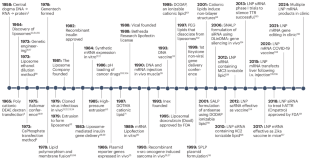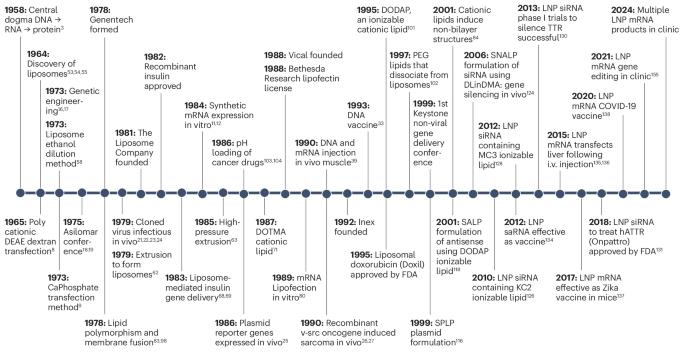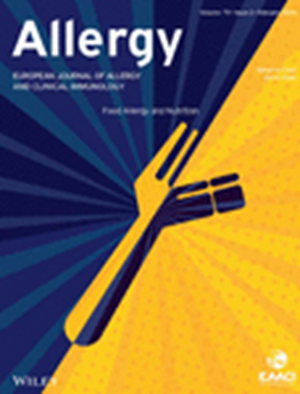The 60-year evolution of lipid nanoparticles for nucleic acid delivery
IF 12.6
1区 医学
Q1 ALLERGY
引用次数: 0
Abstract
Delivery of genetic information to the interior of target cells in vivo has been a major challenge facing gene therapies. This barrier is now being overcome, owing in part to dramatic advances made by lipid-based systems that have led to lipid nanoparticles (LNPs) that enable delivery of nucleic acid-based vaccines and therapeutics. Examples include the clinically approved COVID-19 LNP mRNA vaccines and Onpattro (patisiran), an LNP small interfering RNA therapeutic to treat transthyretin-induced amyloidosis (hATTR). In addition, a host of promising LNP-enabled vaccines and gene therapies are in clinical development. Here, we trace this success to two streams of research conducted over the past 60 years: the discovery of the transfection properties of lipoplexes composed of positively charged cationic lipids complexed with nucleic acid cargos and the development of lipid nanoparticles using ionizable cationic lipids. The fundamental insights gained from these two streams of research offer potential delivery solutions for most forms of gene therapies. Lipid nanoparticle-based systems are increasingly being utilized for the delivery of nucleic acid-based vaccines and therapeutics. In this Perspective, Cullis and Felgner trace the evolution of these systems over the past 60 years and discuss future prospects for LNP-enabled gene therapies.


用于核酸递送的脂质纳米颗粒的 60 年发展历程。
向体内靶细胞内部传递遗传信息一直是基因疗法面临的一大挑战。现在,这一障碍正在被克服,部分原因是脂质系统取得了巨大进步,开发出了能递送核酸疫苗和治疗药物的脂质纳米颗粒(LNPs)。这方面的例子包括已获临床批准的 COVID-19 LNP mRNA 疫苗和 Onpattro (patisiran),后者是一种 LNP 小干扰 RNA 治疗剂,用于治疗转甲状腺素诱导的淀粉样变性病 (hATTR)。此外,一系列前景看好的 LNP 疫苗和基因疗法也在临床开发中。在此,我们将这一成功归功于过去 60 年中开展的两项研究:发现由带正电荷的阳离子脂质与核酸载体复合物组成的脂质体的转染特性,以及开发使用可离子化阳离子脂质的脂质纳米颗粒。从这两项研究中获得的基本见解为大多数形式的基因疗法提供了潜在的传递解决方案。
本文章由计算机程序翻译,如有差异,请以英文原文为准。
求助全文
约1分钟内获得全文
求助全文
来源期刊

Allergy
医学-过敏
CiteScore
26.10
自引率
9.70%
发文量
393
审稿时长
2 months
期刊介绍:
Allergy is an international and multidisciplinary journal that aims to advance, impact, and communicate all aspects of the discipline of Allergy/Immunology. It publishes original articles, reviews, position papers, guidelines, editorials, news and commentaries, letters to the editors, and correspondences. The journal accepts articles based on their scientific merit and quality.
Allergy seeks to maintain contact between basic and clinical Allergy/Immunology and encourages contributions from contributors and readers from all countries. In addition to its publication, Allergy also provides abstracting and indexing information. Some of the databases that include Allergy abstracts are Abstracts on Hygiene & Communicable Disease, Academic Search Alumni Edition, AgBiotech News & Information, AGRICOLA Database, Biological Abstracts, PubMed Dietary Supplement Subset, and Global Health, among others.
 求助内容:
求助内容: 应助结果提醒方式:
应助结果提醒方式:


